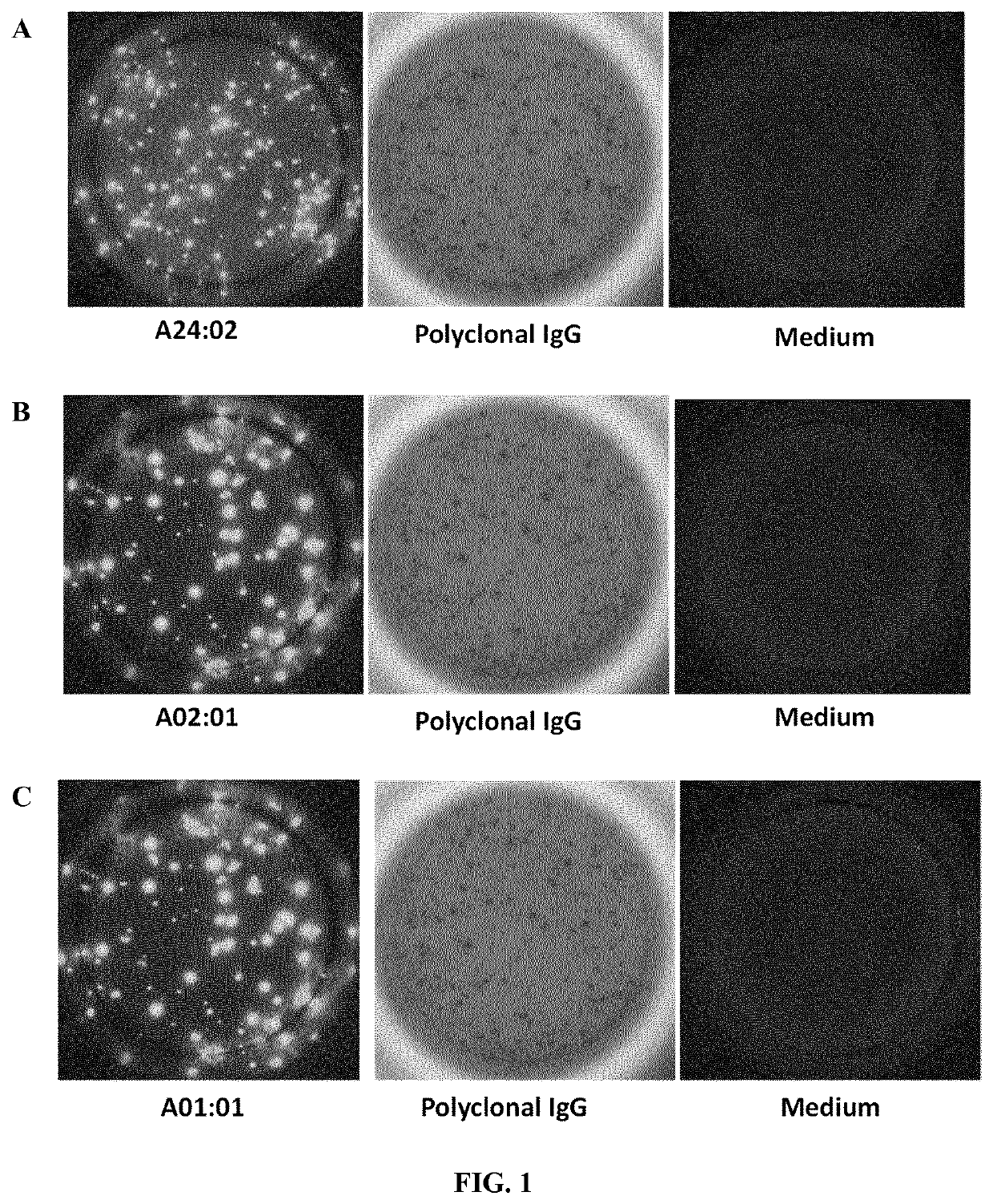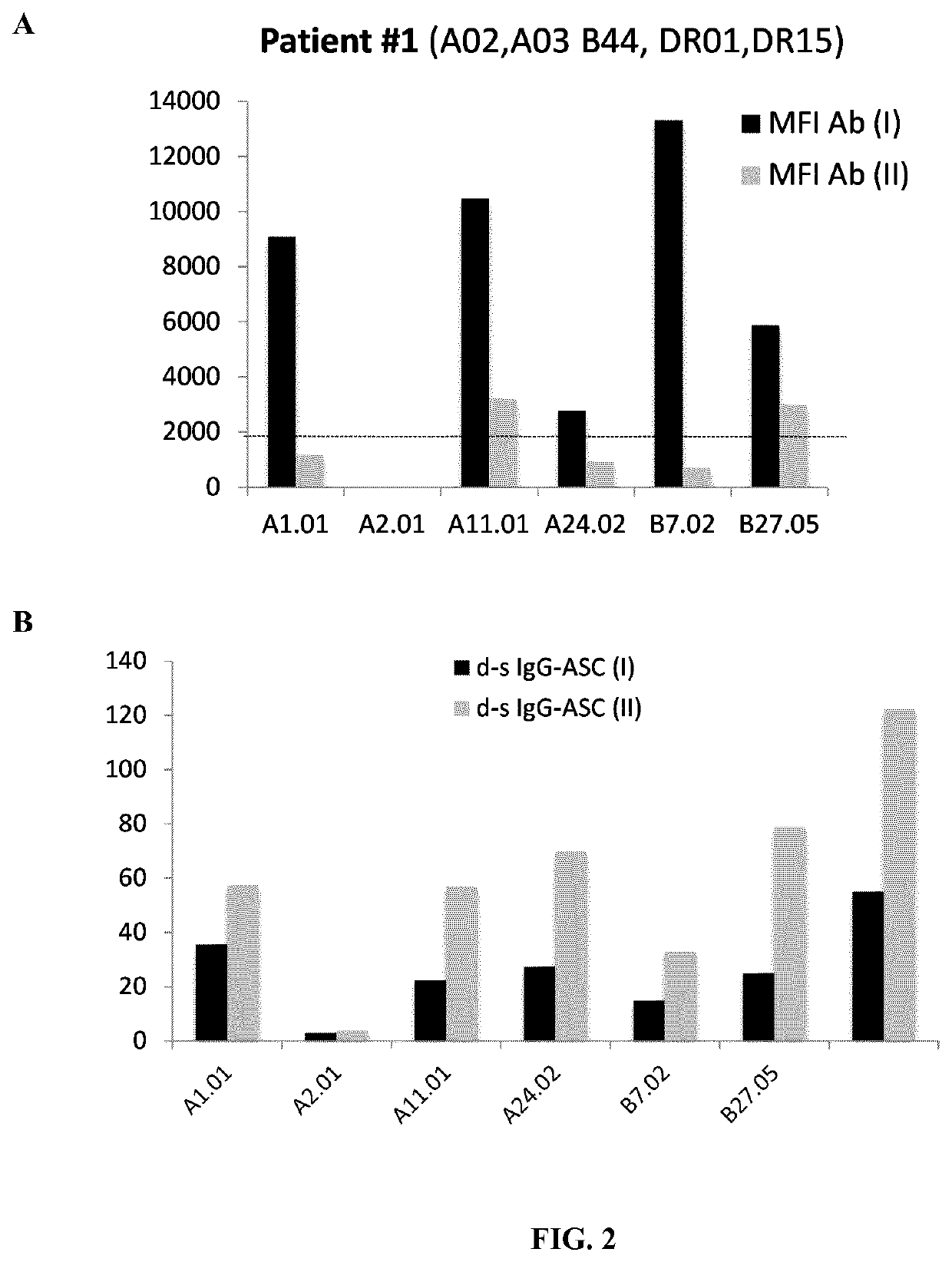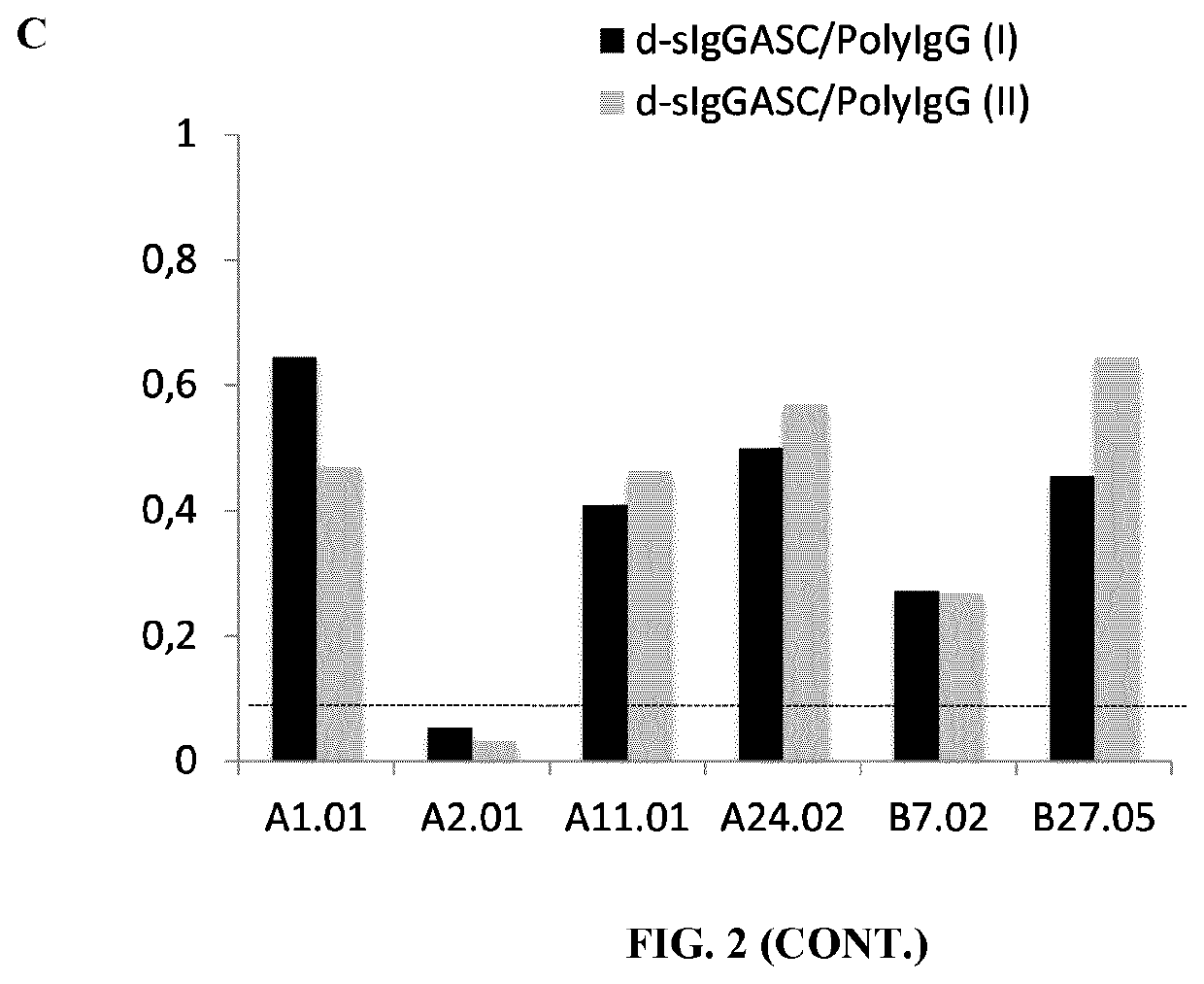Method for detecting antibody-secreting B cells specific for HLA
a technology of hla and bcells, applied in the field of detecting bcells specific for hla, can solve the problems of inability to detect antibodies, low frequency of donor-specific assays, and inability to quantify the number of cells contributing to alloantibody production
- Summary
- Abstract
- Description
- Claims
- Application Information
AI Technical Summary
Benefits of technology
Problems solved by technology
Method used
Image
Examples
example 1
[0160]1. Purpose
[0161]The enzyme-linked immunospot (Elispot) assay is a method which has been adapted for the detection of individual cells secreting antibodies against specific HLA antigens, thus allowing the detection of the frequency of circulating HLA antigen-specific memory B cells. Elispot assays employ the quantitative sandwich enzyme-linked immunosorbent assay (ELISA) technique.
[0162]Differently from assessing circulating memory / effector T cells that are abundant in the periphery, the reduced number of plasma blast circulating in peripheral blood renders this approach not feasible and reproducible enough to regularly assess antigen-specific antibody secreting B cells (ASC). Nonetheless, although memory B cells are present in the periphery, they require pre---stimulation in order to differentiate into detectable ASCs, thus an appropriate number of stimulated cells can be seeded into ELISPOTs wells to determine their HLA antigen-specific immunogenicity.
A. Defini...
example 2
Assessing Donor Specific Antibody-Secreting Memory B Cells (ASC) Using the B-Cell Elispot Assay in Kidney Transplant Patients
[0235]The presence of donor HLA-specific ASC in different clinical conditions in kidney transplant recipients has been assessed.[0236]1. Highly sensitized individuals against multiple HLA-specific antigens by means of circulating HLA-specific antibodies in peripheral blood assessed by LUMINEX do also show high frequency of HLA-specific ASC evaluated by the ELISPOT assay (FIGS. 1 and 2).[0237]2. No detection of ASC against own HLA antigens after the B-cell proliferation and differentiation process and despite being highly sensitized (FIG. 3). Again, polyclonal IgG secretion can be found in these patients as a correct control of the ASC proliferation assay.[0238]3. Some patients on the waiting list for a subsequent kidney allograft and not showing circulating HLA-specific antibodies against HLA-mismatch antigens of the previous graft do display high frequency of...
example 3
n of the B-Cell Elispot Assay in a Large Cohort of Kidney Transplant Patients
Study Design
[0241]All patients included in the study gave written informed consent to participate in the study, and the study was approved by the institutional review board at Bellvitge University Hospital.
[0242]The assessment of HLA-sp ASC frequencies using the newly developed B-cell Elispot assay was done evaluating 278 HLA-sp target antigens from 89 peripheral blood (PB) samples belonging to 66 patients and 4 healthy individuals. Out of the 89 PB samples obtained, 9 were excluded of the study because of insufficient ASC proliferation after the in vitro stimulation.
[0243]The main demographics of the study population are illustrated in table 1. As shown, the study population evaluated consisted of 26 highly immunized and 10 non-immunized patients on the waiting list for kidney transplantation were evaluated against specific HLA antigens. Also, 16 adult kidney transplant patients undergoing ABMR were assess...
PUM
| Property | Measurement | Unit |
|---|---|---|
| MFI | aaaaa | aaaaa |
| mean fluorescence intensity | aaaaa | aaaaa |
| frequency | aaaaa | aaaaa |
Abstract
Description
Claims
Application Information
 Login to View More
Login to View More - R&D
- Intellectual Property
- Life Sciences
- Materials
- Tech Scout
- Unparalleled Data Quality
- Higher Quality Content
- 60% Fewer Hallucinations
Browse by: Latest US Patents, China's latest patents, Technical Efficacy Thesaurus, Application Domain, Technology Topic, Popular Technical Reports.
© 2025 PatSnap. All rights reserved.Legal|Privacy policy|Modern Slavery Act Transparency Statement|Sitemap|About US| Contact US: help@patsnap.com



